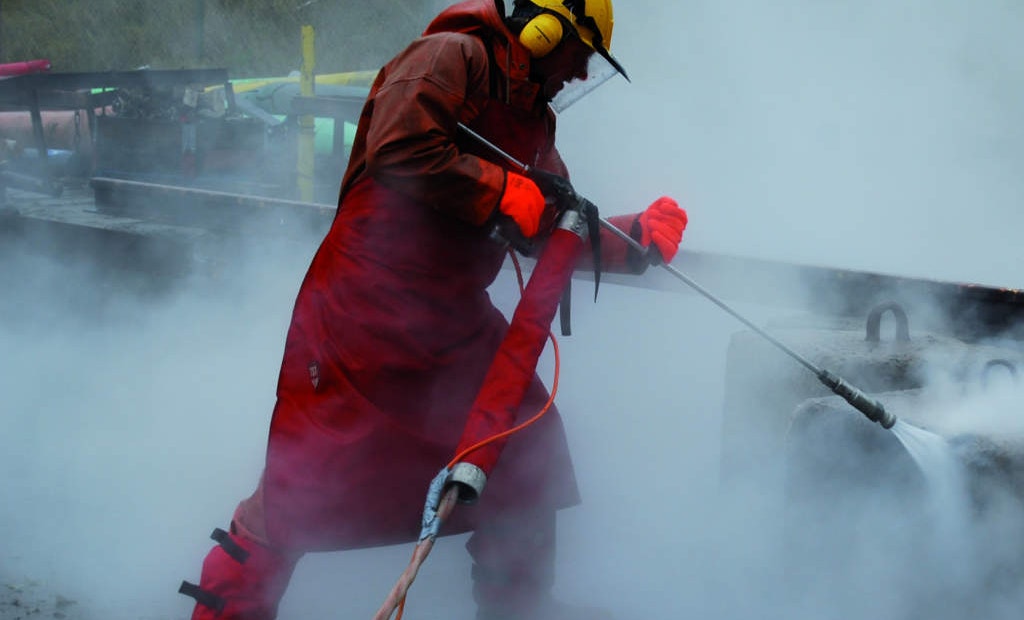Interested in Cleaning?
Get Cleaning articles, news and videos right in your inbox! Sign up now.
Cleaning + Get AlertsEvery year, heedless jetter operators are needlessly exposed to serious injuries — even death — and make their employers vulnerable to negligence lawsuits that all could be avoided by a small investment in personal protective equipment, or PPE.
While it’s difficult to find statistics that pinpoint exactly how many workers a year suffer from waterjetting injuries, one thing is certain: Accidents can, and will, happen. It only takes 100 psi of pressure to puncture human skin. As such, imagine the damage a jetter that generates 2,500 psi or more could do to an unprotected worker. Moreover, operators who get injured often get infections, too, because contaminants get driven deep into surrounding tissue.
When it comes to PPE, OSHA requires employers to assess workplace hazards to determine if protective gear is required, then provide employees with appropriate gear. Employers are also charged with requiring employees to use the gear and keeping it in sanitary and reliable condition.
A company could easily spend thousands of dollars on a full complement of PPE for each employee. But for roughly $2,000 to $2,500, you can outfit an employee with three basic safety items: a protective apron, gaiters (boot covers) and gauntlets (for upper hand and forearm protection).
Aprons
“For the money, there is much value in the apron, which covers the front of your body where you’re most vulnerable — the stomach and chest, where your vital organs are located,” says Magnus Krokstrom, head of marketing for TST Sweden AB. “It’s made out of Dyneema, an extremely strong fiber that, on a weight-for-weight basis, is 15 times stronger than steel. To give you an idea of its strength, it’s also used to make ropes to tie down large ships at docks — it’s stronger than steel wire.”
TST aprons weigh about 3 pounds and come in one size. But don’t be deterred by the weight, Krokstrom cautions; shoulder straps help distribute the weight evenly and comfortably.
“We make all of our clothing as comfortable as possible, so that people will use it,” he says. “If it hurts to wear something, you won’t use it. Comfort, safety and function are always our top considerations.”
Gaiters
To protect workers’ vulnerable feet, TST Sweden AB offers gaiters (boot shields) made of either aluminum or Dyneema. The gaiters are adjustable to fit a variety of boot sizes.
“They offer protection all the way around,” he says. “Even if workers get hit from behind, they’re still protected.”
Gauntlets
For hand and forearm protection, Krokstrom recommends Dyneema-lined gauntlets, which are protective sleeves with adjustable Velcro straps.
“They’re not like a glove,” he says. “They don’t cover the palms of your hands; if they were, you couldn’t hold tools properly.”
Other PPE Items
TST also sells PPE kits that include more comprehensive sets of full-body gear, such as one with protective overalls with integrated gauntlets and a waistcoat; a waistcoat, a pair of pants, and gauntlets; or a pair of pants and a jacket with integrated gauntlets.
“The kits offer true full-frontal protection,” Krokstrom says. “That’s an important detail — you never know where you might get hit.”
In warmer climates, Krokstrom says aprons or waistcoats (vests) would be more comfortable than full-body gear. But he notes that TST also offers ventilated gear to reduce heat.
Many people work in warm environments, so an apron or vest might be more comfortable. Plus, ventilated suits reduce the heat.
“We are convinced that clothes that are not comfortable will not be used,” he says. “And we want people to use safety gear. That’s our mission.”






